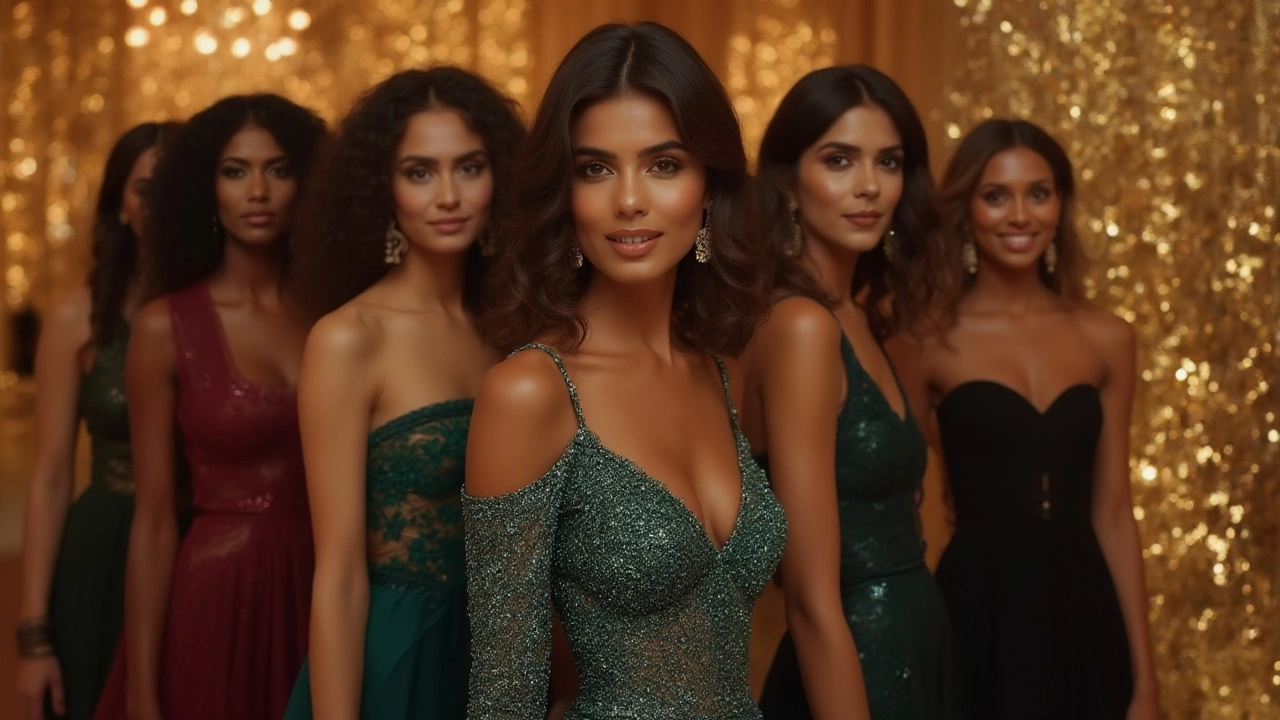Evening Dress Colors: How to Pick the Perfect Shade
When planning your next night‑out look, evening dress colors, the hues you select for formal or semi‑formal dresses that shine after sunset. Also known as nighttime palettes, they shape the mood of the event and can highlight your personal style.
Evening dress colors belong to a broader color palette, a curated collection of shades that work together based on hue, saturation, and contrast. A well‑balanced palette lets you mix deep jewel tones with soft neutrals without clashing. It also ties into the latest fashion trends, the current directions designers and influencers are pushing in runway shows and street style, which now favor rich emeralds, classic navy, and metallic accents for evening wear.
Choosing the right shade requires three simple steps. First, match the color to the event’s dress code. A black‑tie gala often calls for timeless midnight blues or elegant burgundy, while a cocktail party welcomes muted blush or vibrant teal. Second, consider your skin tone: warm undertones pair beautifully with gold‑based hues like amber and copper, whereas cool undertones shine in sapphire or icy silver. Third, think about the season – autumn gatherings suit burnt orange and deep plum, while spring affairs lend themselves to fresh mint and soft lavender.
How Styling Tips Shape Your Evening Look
Styling tips act as the bridge between color choice and overall impact. Pairing a navy dress with gold accessories creates a high‑contrast look that draws attention, while matching a silver gown with muted silver shoes keeps the outfit cohesive. Layering texture – think satin versus chiffon – can also affect how a color appears under different lighting. When the venue is dim, reflective fabrics amplify metallic shades, making them pop without extra sparkle.
Another key tip is to use the 60‑30‑10 rule: let 60% of your outfit be the primary dress color, 30% a secondary accent (like a belt or shawl), and 10% a bold statement piece (such as a clutch or jewelry). This rule mirrors how fashion designers balance color palettes on the runway and helps you avoid over‑accessorizing. If you’re unsure, start with a neutral base like charcoal or charcoal‑gray and add a splash of color via a statement necklace or shoes.
Seasonal color theory also guides your selection. Winter evenings welcome deep, cool hues like royal blue and emerald, which stand out against cooler lighting. Summer evenings, especially outdoor events, benefit from softer, warm shades that reflect sunset tones – think coral, peach, or soft gold. By aligning your dress color with the seasonal palette, you naturally harmonize with the environment.
Evening dress colors also influence perception. Research shows that red conveys confidence and power, making it a solid choice for networking events. Blue communicates trust and calm, perfect for dinner dates or business gatherings. Green, especially forest or olive tones, suggests a grounded, sophisticated vibe. Knowing the psychological impact of each hue lets you tailor your outfit to the impression you want to make.
Now that you’ve learned how color palettes, fashion trends, and styling tips intersect, you’re ready to explore the detailed guides below. Each article dives deeper into specific shades, accessorizing ideas, and fit advice, giving you a toolbox of options for every occasion. Scroll down to find the perfect combination that fits your style, skin tone, and the night ahead.
Best Colors for Evening Dresses: How to Pick the Perfect Shade

Explore the best color for an evening dress, with expert tips, trending shades, and advice tailored to your style, skin tone, and event mood.
- Jul 10, 2025
- Violet Greenfield
- 0
- Permalink